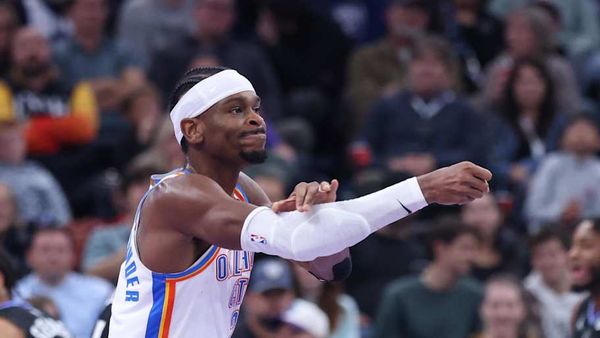
Question #4 of GOBankingRates’ Top 100 Money Experts Series
Are Gen Zers redefining frugality by embracing minimalist lifestyles?
If there’s one thing that holds true throughout the generations, it’s that what once was old often becomes new again. Gen Z certainly embraces this ethos, leaning into the fashion trends of their Millennial forerunners (hello, low-rise jeans). Studies from outlets like Adolescent Content, a youth-focused creative agency, show that Zoomers are also emotionally invested in achieving traditional financial milestones that would have made their grandparents proud, like owning a home, building a family and even moving to the suburbs.
For You: Clever Ways To Save Money That Actually Work in 2025
Learn More: 3 Advanced Investing Moves Experts Use to Minimize Taxes and Help Boost Returns
So, it shouldn’t be surprising that Gen Z is embracing the old-fashioned value of frugality — only, of course, with their own digital twist. It certainly doesn’t surprise Brian Jung, a leading voice in personal finance and cryptocurrency, who boasts more than 2.2 million subscribers on his YouTube channel. Jung has noticed that Zoomers aren’t just passionate about living frugally — they’re actively redefining what a cost-conscious life can look like.
Instead of seeing frugality as “going without,” Zoomers are finding style — and even joy — in minimalism.
How Gen Z Compares to Other Generations
As Jung explains it, past generations often took a more reactionary stance toward frugality, treating it as a way to delay gratification when they couldn’t afford something they wanted or to cut back after they’d already overspent. But rather than gaze at a pricey item with heart eyes and a sense of impending financial doom, Zoomers are swapping out champagne tastes for a nice sparkling water instead (or, better yet, cold tap water).
“Gen Z is bypassing that cycle altogether by making intentional purchases from the start,” Jung said. “Minimalism isn’t just a design trend — it’s a filter for life. It’s about removing distractions and aligning spending with values.”
These values might reflect broader social and political concerns, like ethical consumption and environmentally friendly purchases. But they also speak to the kind of life Gen Z wants — one that might include staying in to save for a down payment on a home in lieu of “hitting the club” (as their older, less-cool parents might have done at their age) and staying stuck in the rental cycle.
Read Next: What Salary Single People Need To Live Comfortably in 100 Major US Cities
Why Frugality Is the New Flex
It’s no secret that Gen Z has come of age during a time of rising debt, high housing costs and increased economic pressure. But instead of responding to the financial crunch by pleasure-seeking with their wallets, Jung says they’re taking a more values-based, future-focused approach to spending and saving.
“Gen Z doesn’t just want to make money; they want financial peace,” he said. “They’d rather own less and live more. Minimalism is a rebellion against excess, and frugality is the new flex.”
For older generations, the less (money you spend) is more (economic freedom) approach Gen Z is embracing offers a compelling template. As Gen X works toward a stable retirement and Millennials balance the needs of aging parents and their own kids, intentional spending that focuses on what truly “sparks joy” (to quote Marie Kondo, one of the OG queens of minimalism) could help build a more secure financial future.
Rebranding Frugality
Like everything else they touch, Zoomers are adding their own unique touch to the reemergence of minimalism and frugality. The way Jung sees it, Gen Z is doing more than redefining minimalism — they’re rebranding it entirely.
“Minimalism isn’t sacrifice — it’s strategy, and we’re seeing a new culture being developed,” he said. “Gen Z is focused on spending in alignment with their values, which often means choosing quality over quantity, digital tools over clutter, and flexibility over accumulation.”
Unlike their predecessors, who remember the days of dial-up internet — or using the phone book (gasp) — Gen Z has been tech-savvy from day one. They’ve integrated the speed and convenience of online life into their approach to thriftiness, making frugality a team effort.
“From tracking subscriptions to group-sharing expenses, Gen Z is tech-savvy in a way that makes frugality look effortless,” said Jung. “They use budgeting apps, browser tools for cash back, and even learn money hacks through social media. They’re proving that discipline can be digital and communal.”
Bottom Line
Yes, everything old is new again, including the increasing popularity of embracing a frugal lifestyle — and Zoomers are leading the way. They’re finding smart, stylish ways to make being thrifty easy and cool, and the rest of us could stand to take notes.
This article is part of GOBankingRates’ Top 100 Money Experts series, where we spotlight expert answers to the biggest financial questions Americans are asking. Got a question of your own? You could win $500 just for asking — learn more at GOBankingRates.com.
More From GoBankingRates
- Dave Ramsey Says This is the Best Way to Pay Off Debt
- The One Number That Reveals Your True Financial Health, According to Experts
- Are Memberships Worth It? This One Comes with More Than $1K in Annual Benefits
- 3 Advanced Investing Moves Experts Use to Minimize Taxes and Help Boost Returns
This article originally appeared on GOBankingRates.com: Is Frugality the New Status Symbol? Brian Jung Explains Why It’s Catching On







